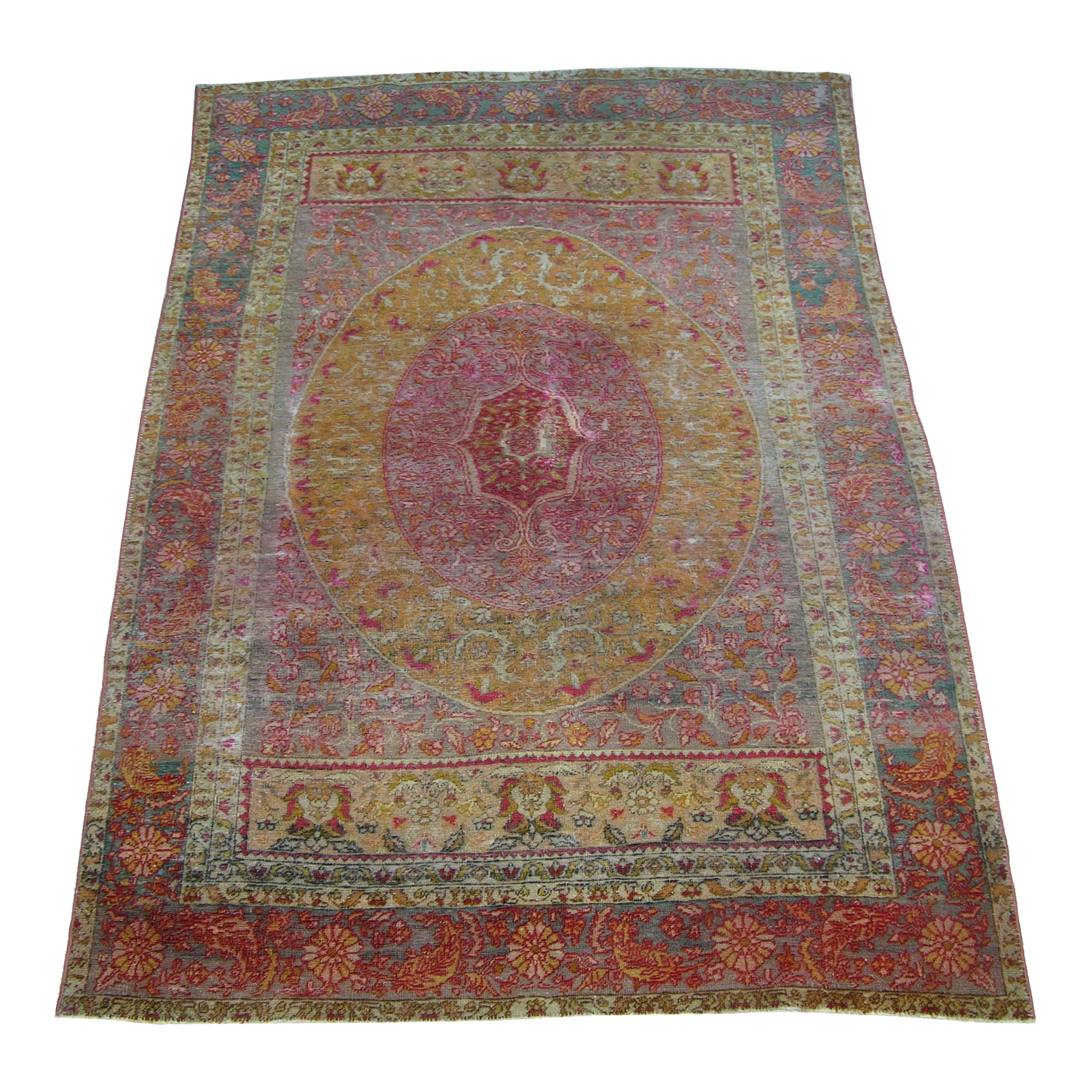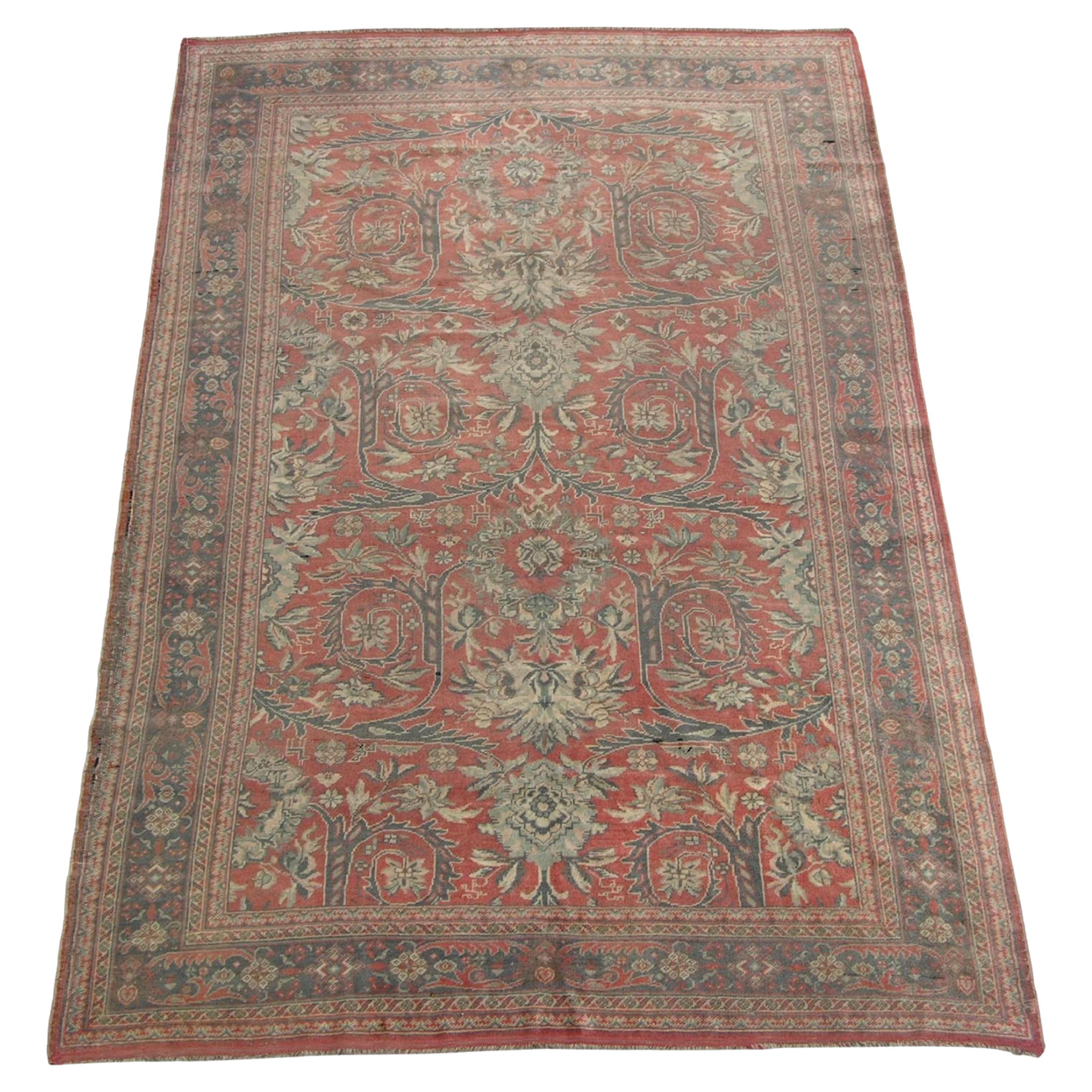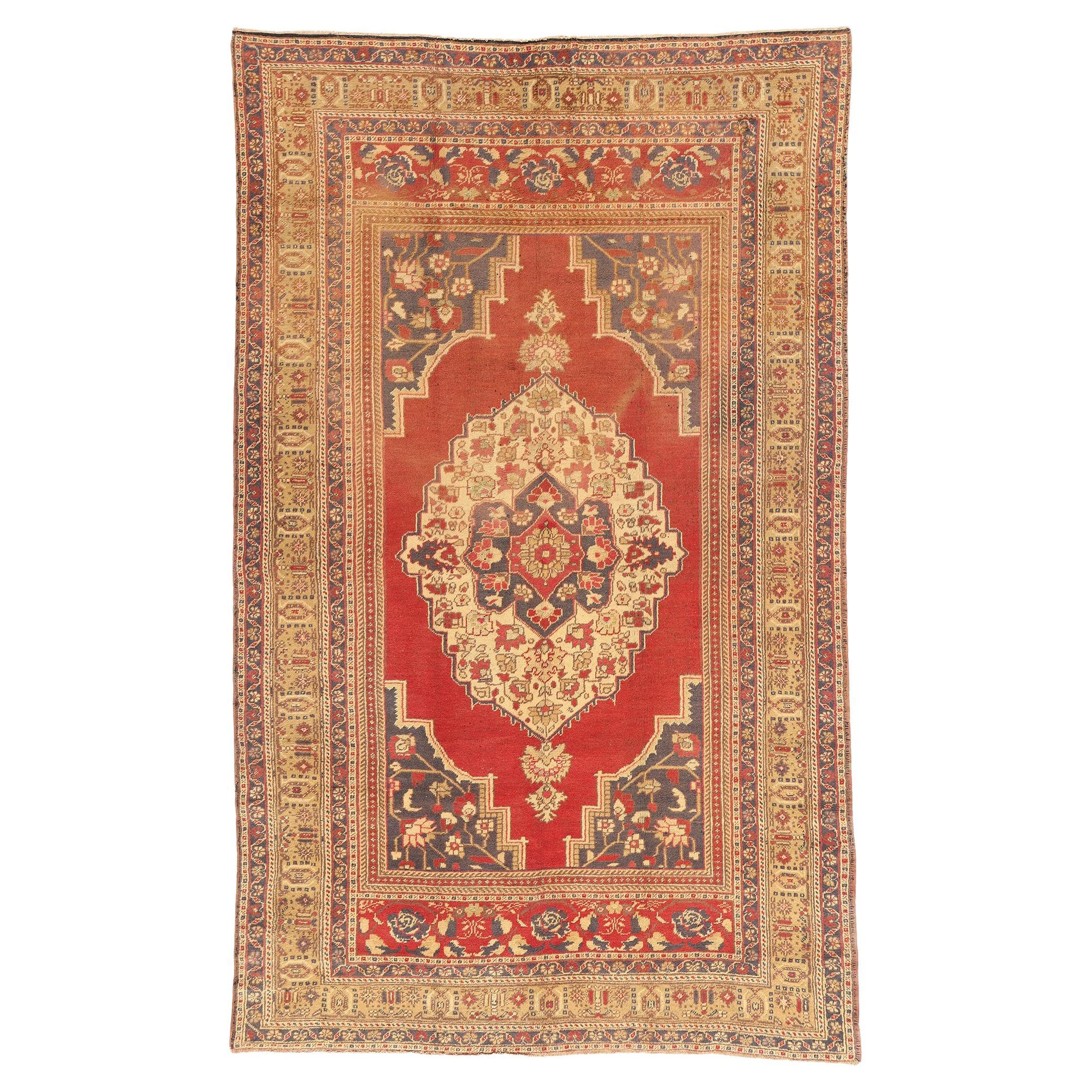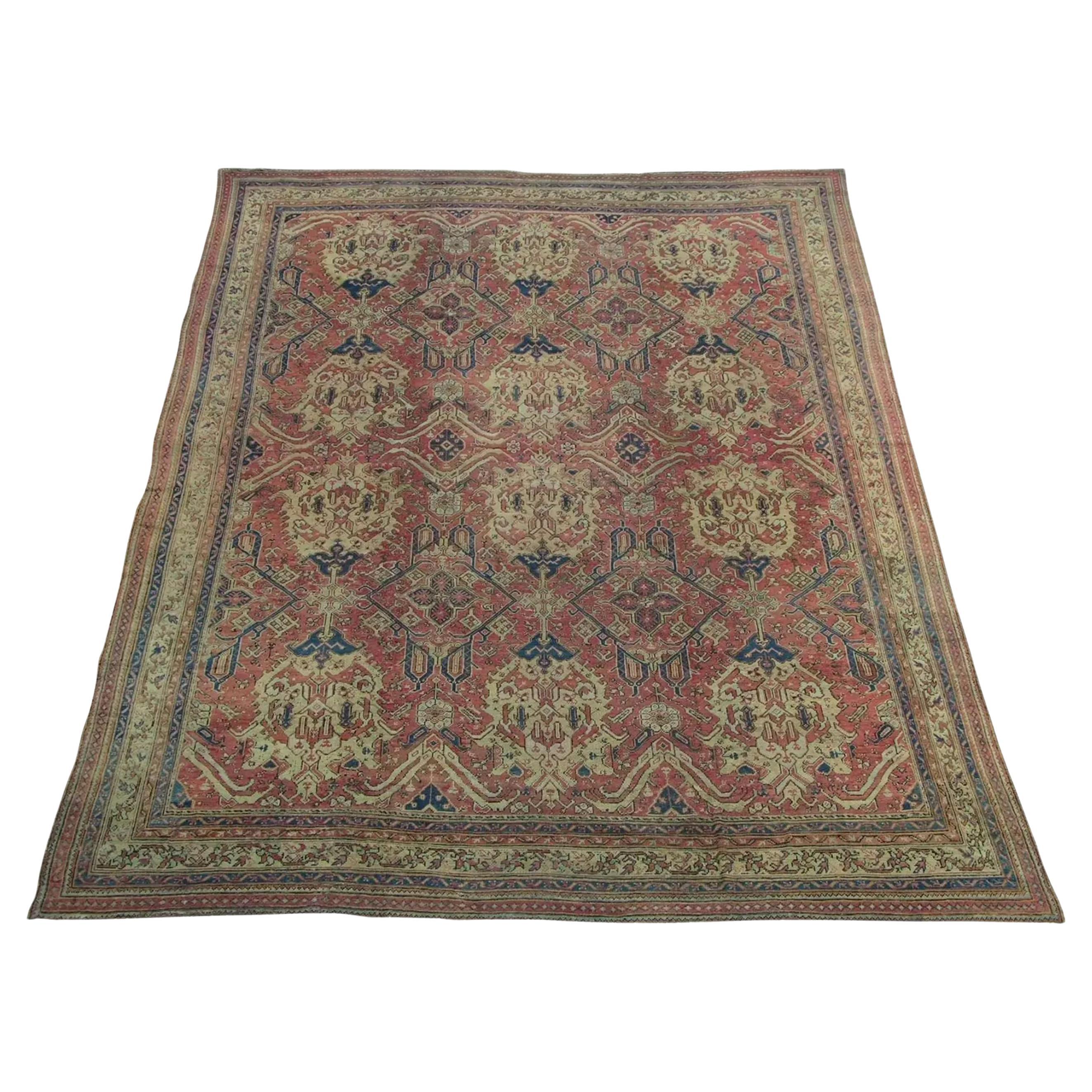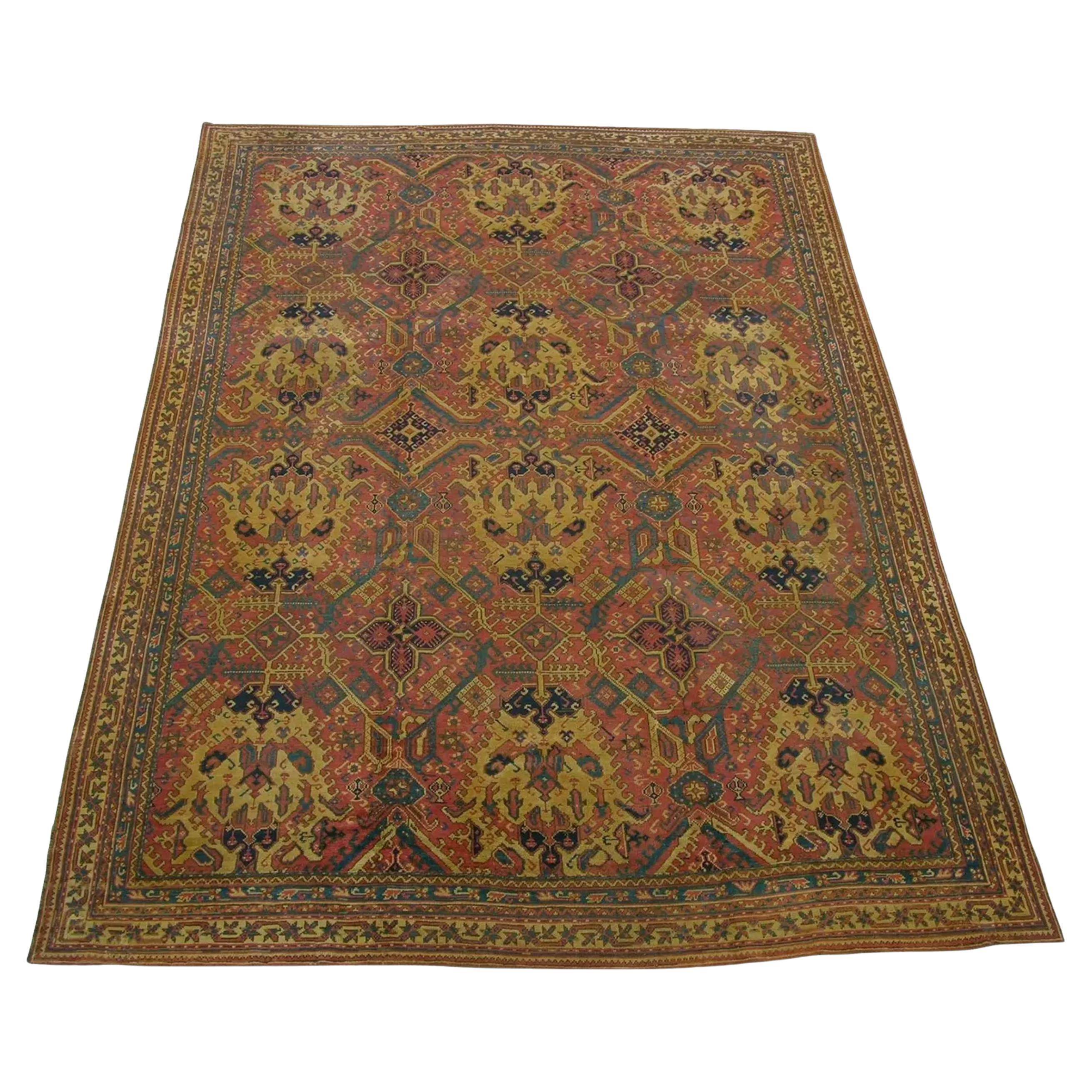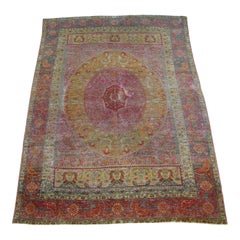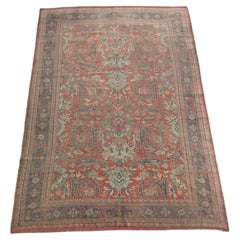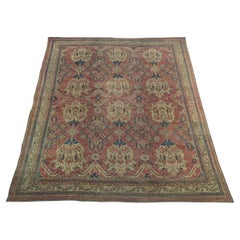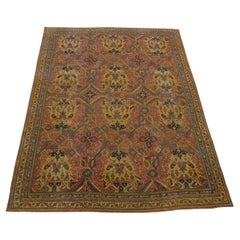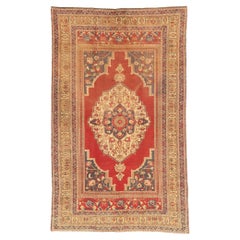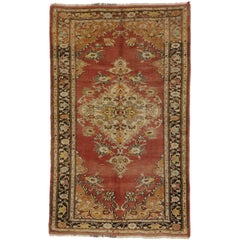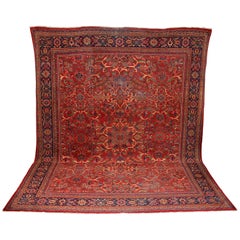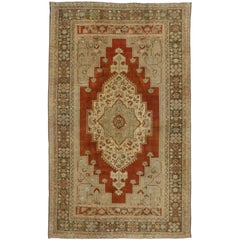Want more images or videos?
Request additional images or videos from the seller
1 of 5
Antique Turkish Silk Rug
$25,500
£19,348.81
€22,123.64
CA$35,616.59
A$39,600.80
CHF 20,677.35
MX$482,038.13
NOK 263,834
SEK 247,199.85
DKK 165,112.78
Shipping
Retrieving quote...The 1stDibs Promise:
Authenticity Guarantee,
Money-Back Guarantee,
24-Hour Cancellation
About the Item
Turkish rugs (also referred to as Anatolian rugs) are, arguably, the rugs that started it all. These carpets were among the first wave of Oriental antique carpets to be exported into Europe. The vintage Turkish rugs were prized commodities and artistically influential pieces. The designs of Turkish rugs such as the iconic guls, prayer rugs and small repeating patterns found on these carpets, worked their way into the iconic paintings of the European masters, including Memling, Lotto, Bellini, Hans Holbein and many others.
These painters were inspired so much by Turkish rugs and the design motifs they feature that the artists have lent their names to some of these famous Turkish patterns. One of the most famous artists that incorporated rugs from Turkey in his painting was the great and iconic 16th century painter Hans Holbein.
The styles of Turkish rugs varies widely. Bergama rugs, for example, produced tribal-influenced Turkoman pieces, Hereke rugs feature elegant curve-linear patterns worthy of Ottoman palaces and the most well known of all rug weaving centers in Turkey – Oushak produces decorative room-sized carpets that are revered, above all else, for their soft pastel-coloration.
The Romanian master weaver – Theodor Tuduc, also produced exceptional carpets. His rugs were based on existing styles and designs from the Caucasus, Turkey as well as Persia. Antique Turkish rugs are elegant and beautifully varied in look, texture, quality and design.
Turkish Rugs are a major component of the carpet weaving traditions in the Middle East. It was largely the Turkish people and related groups from Central Asia who introduced the knotted pile carpet to the Islamic world. The largest and oldest collection of early Oriental rugs comes from Turkey. The so-called geometric or Seljuk carpets from the thirteenth century have been well preserved in the mosques of Konya and other towns in Central Anatolia. While most antique Persian rugs are fine and intricate, the antique Turkish rugs are extremely desirable by interior decorators. Since many of the antique rugs from Turkey boast larger scale design patterns that are usually also set against softer colors, they do have a very decorative appeal. The early Turkish rugs are also some of the most collectible rugs in today’s market due to their more primitive designs and the fact that not many were produced.
- Dimensions:Width: 81 in (205.74 cm)Length: 108 in (274.32 cm)
- Style:Other (In the Style Of)
- Materials and Techniques:
- Place of Origin:
- Period:1900-1909
- Date of Manufacture:1900
- Condition:good condition.
- Seller Location:Los Angeles, US
- Reference Number:Seller: 3888y1stDibs: LU9020235536192
About the Seller
5.0
Platinum Seller
Premium sellers with a 4.7+ rating and 24-hour response times
Established in 1920
1stDibs seller since 2023
63 sales on 1stDibs
Typical response time: <1 hour
- ShippingRetrieving quote...Shipping from: Los Angeles, US
- Return Policy
Authenticity Guarantee
In the unlikely event there’s an issue with an item’s authenticity, contact us within 1 year for a full refund. DetailsMoney-Back Guarantee
If your item is not as described, is damaged in transit, or does not arrive, contact us within 7 days for a full refund. Details24-Hour Cancellation
You have a 24-hour grace period in which to reconsider your purchase, with no questions asked.Vetted Professional Sellers
Our world-class sellers must adhere to strict standards for service and quality, maintaining the integrity of our listings.Price-Match Guarantee
If you find that a seller listed the same item for a lower price elsewhere, we’ll match it.Trusted Global Delivery
Our best-in-class carrier network provides specialized shipping options worldwide, including custom delivery.More From This Seller
View AllAntique Turkish Rug 6.1x4.2
Located in Los Angeles, US
Turkish rugs (also referred to as Anatolian rugs) are, arguably, the rugs that started it all. These carpets were among the first wave of Oriental antique carpets to be exported into Europe. The vintage Turkish rugs were prized commodities and artistically influential pieces. The designs of Turkish rugs such as the iconic guls, prayer rugs and small repeating patterns found on these carpets, worked their way into the iconic paintings of the European masters, including Memling, Lotto, Bellini, Hans Holbein and many others.
These painters were inspired so much by Turkish rugs and the design motifs they feature that the artists have lent their names to some of these famous Turkish patterns. One of the most famous artists that incorporated rugs from Turkey in his painting was the great and iconic 16th century painter Hans Holbein.
The styles of Turkish rugs...
Category
Antique Early 1900s Other Turkish Rugs
Materials
Wool, Cotton
Antique Turkish Rug 10.0x6.6
Located in Los Angeles, US
Turkish rugs (also referred to as Anatolian rugs) are, arguably, the rugs that started it all. These carpets were among the first wave of Oriental antique carpets to be exported into Europe. The vintage Turkish rugs were prized commodities and artistically influential pieces. The designs of Turkish rugs such as the iconic guls, prayer rugs and small repeating patterns found on these carpets, worked their way into the iconic paintings of the European masters, including Memling, Lotto, Bellini, Hans Holbein and many others.
These painters were inspired so much by Turkish rugs and the design motifs they feature that the artists have lent their names to some of these famous Turkish patterns. One of the most famous artists that incorporated rugs from Turkey in his painting was the great and iconic 16th century painter Hans Holbein.
The styles of Turkish rugs...
Category
Antique Early 1900s Other Turkish Rugs
Materials
Wool, Cotton
Early 20th Century Antique Oushak Rug
Located in Los Angeles, US
Antique Turkish Oushak rugs have been woven in Western Turkey since the beginning of the Ottoman period. Historians attributed to them many of the great masterpieces of early Turkish...
Category
Early 20th Century Turkish Oushak Turkish Rugs
Materials
Wool, Cotton
Antique Oushak Rug 18.7x13.2
Located in Los Angeles, US
Antique Turkish Oushak rugs have been woven in Western Turkey since the beginning of the Ottoman period. Historians attributed to them many of the great masterpieces of early Turkish...
Category
Antique Early 1900s Turkish Oushak Turkish Rugs
Materials
Wool, Cotton
Antique Tabriz Rug Floral Design
Located in Los Angeles, US
Antique Tabriz rugs are distinguished by their excellent weave and by their remarkable adherence to the classical traditions of antique Persian rug design. But they cannot be disting...
Category
Antique Early 1900s Asian Other Russian and Scandinavian Rugs
Materials
Wool, Cotton
Antique Oushak Rug 15.9x12
Located in Los Angeles, US
Antique Turkish Oushak rugs have been woven in Western Turkey since the beginning of the Ottoman period. Historians attributed to them many of the great masterpieces of early Turkish...
Category
Antique 18th Century Other Russian and Scandinavian Rugs
Materials
Wool, Cotton
You May Also Like
1960's Turkish Oushak Carpet with Traditional Style
Located in Dallas, TX
74095 Vintage Turkish Oushak Rug, 06'07 x 10'08. Like the warm embrace of twilight over Anatolia’s rolling hills, this hand-knotted wool vintage Turkish Oushak rug exudes a timeless ...
Category
Mid-20th Century Turkish Oushak Turkish Rugs
Materials
Wool
Vintage Turkish Oushak Accent Rug with Traditional Style, Entry or Foyer Rug
Located in Dallas, TX
73640, vintage Turkish Oushak Accent rug with traditional style, entry or foyer rug. This hand-knotted wool vintage Turkish Oushak accent rug with traditional style features a center...
Category
Mid-20th Century Turkish Modern Turkish Rugs
Materials
Wool
$3,120 Sale Price
20% Off
Large Antique, Fine Orient Rug, Carpet, Hand Knotted
Located in Berlin, DE
High quality, large antique orient rug. Carpet.
Hand knotted. Strong natural colors. Beautiful pattern.
The carpet is in an age-related condition.
Partly traces of wear.
The ...
Category
Antique 19th Century Persian Rugs
Materials
Wool
Vintage Turkish Oushak Rug with Traditional Style, Gallery Rug
Located in Dallas, TX
73983, vintage Turkish Oushak rug with traditional style, gallery rug featuring all medallion and corner pattern. This hand-knotted wool vintage Oushak gallery rug displays a stair-s...
Category
Mid-20th Century Turkish Oushak Turkish Rugs
Materials
Wool
$4,720 Sale Price
20% Off
Pretty antique Turkish Ghyordes oushak style rug
Located in Saint Ouen, FR
Nice antique Turkish Ghyordes rug with beautiful oushak style and design with a pink field on the center white field at the peripheral and a green field in the borders, entirely han...
Category
Antique Late 19th Century Turkish Oushak Turkish Rugs
Materials
Wool, Cotton
$4,086 Sale Price
20% Off
Handmade Carpet Pure Silk Rug, Turkish Herekeh Oriental Rugs
Located in Wembley, GB
The handmade carpet manufacturing of these masterpieces luxury rugs began late the 19th century. This oriental rug was woven in Asian Anatolia, Turkey in the historic city of Hereke. In the mid-19th century, Sultan Abdul Majid proclaimed Hereke to be the royal weaving village. The silk rugs were woven there were considered the finest in the world. All examples used select Borsa silk which is the finest quality carpet silk. The Sultan required that all of the silk rugs woven in Hereke had to be signed with the name Hereke. These carpets were regularly woven for the aristocracy in Europe, Asia, and The Middle East. The design of this rug is unique because it is an interpretation of the famous 17th-century Mughal carpet from India. The Mughal carpet was exhibited in the Metropolitan Museum and was illustrated in the book called Flowers Under Foot...
Category
Vintage 1970s Turkish Other Turkish Rugs
Materials
Silk, Organic Material
More Ways To Browse
Scandinavian Artist Painting
Rugs From Romania
Konya Prayer Rug
Islam Prayer Rug
Ottoman Turkish Silk Rug
Antique Bergama Rug
Antique Silk Hereke
Palace Size Oushak Rug
Wave Ottoman
Lotto Carpet
Lotto Oushak Rug
Tuduc Rug
Italian Lacquer Dining Room Sets
Modern Low Stools
Stingray Table
Ceramic Round Table
Dining Table With Wheels
French Brass Console
